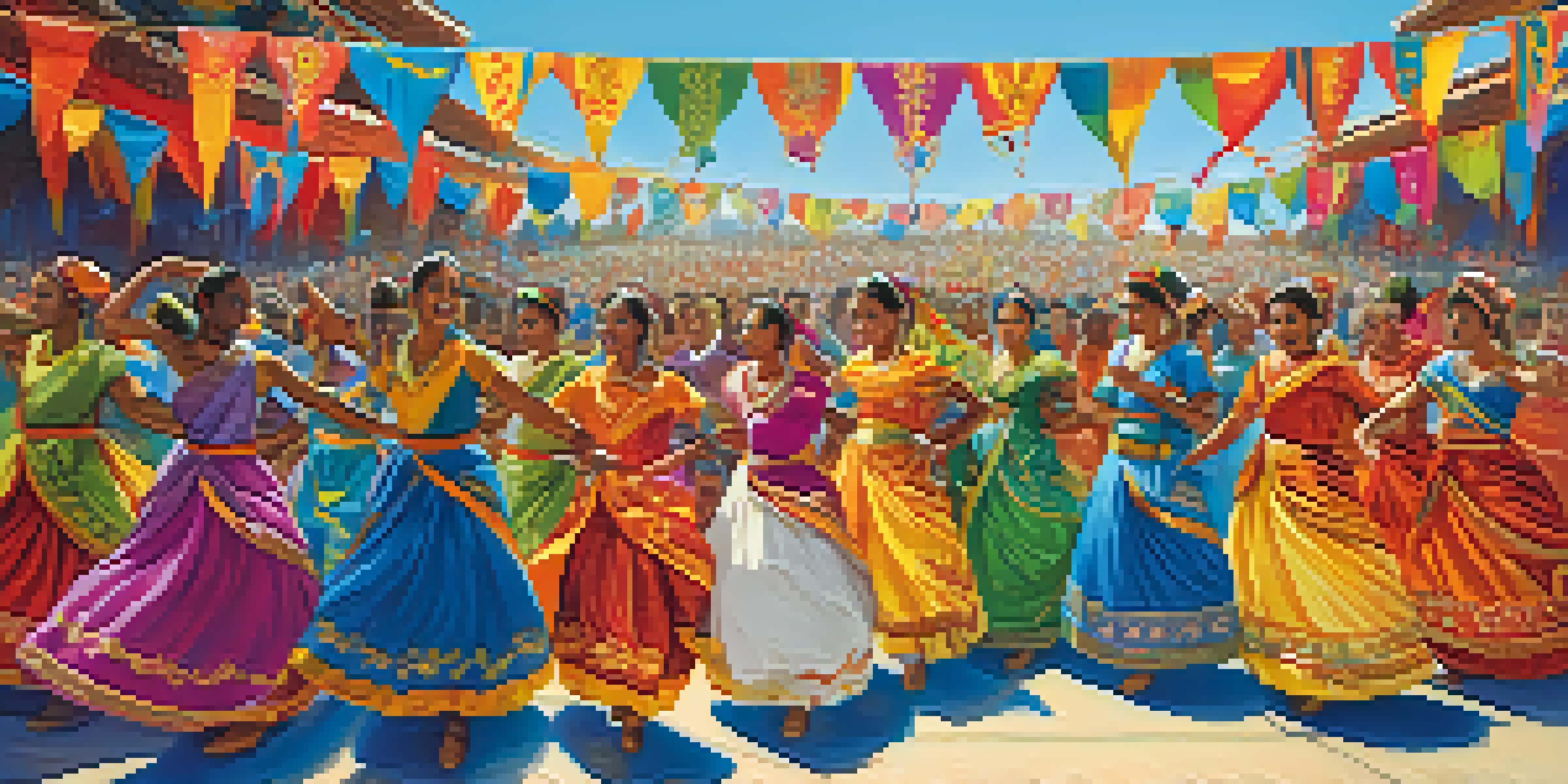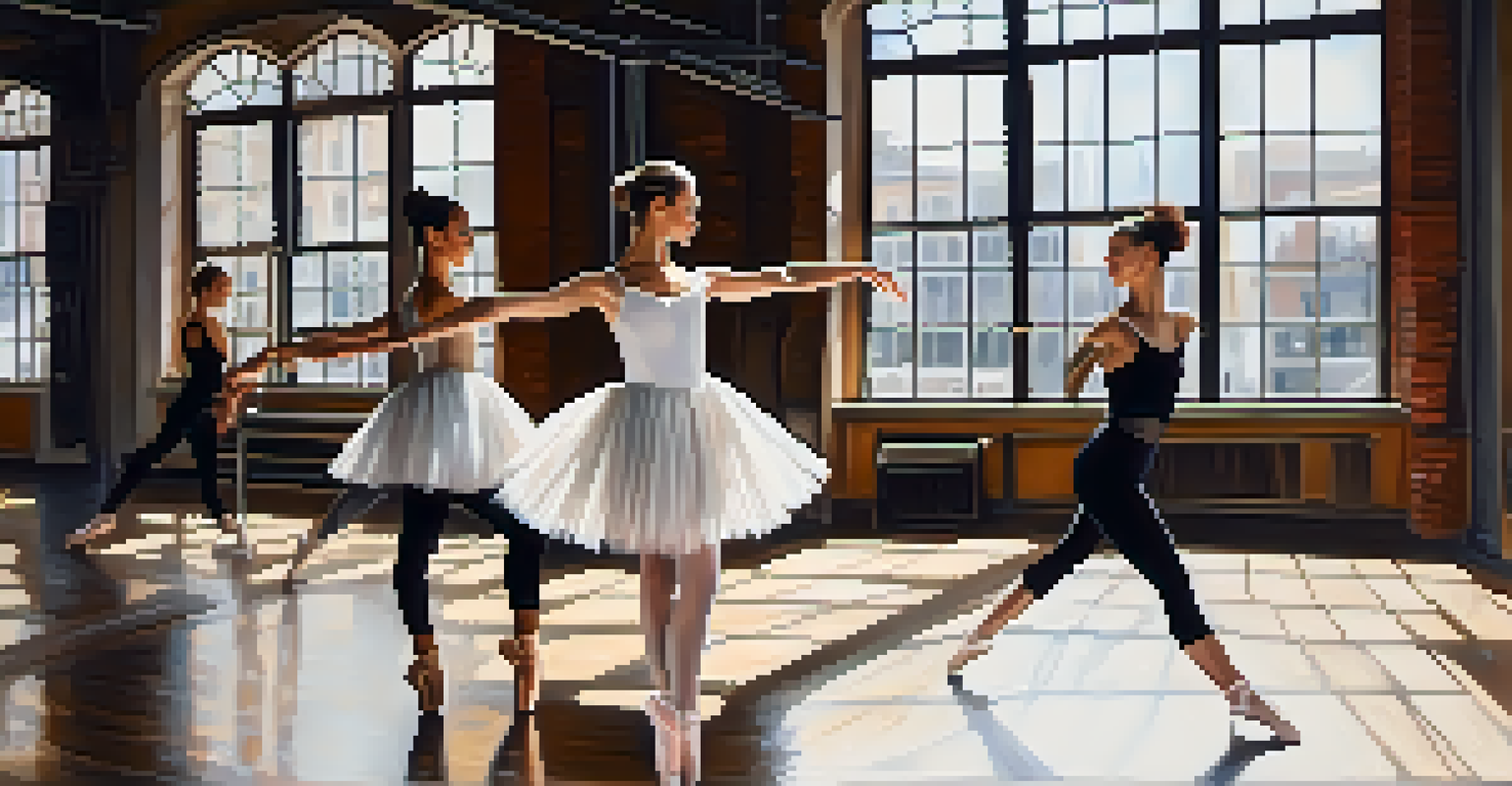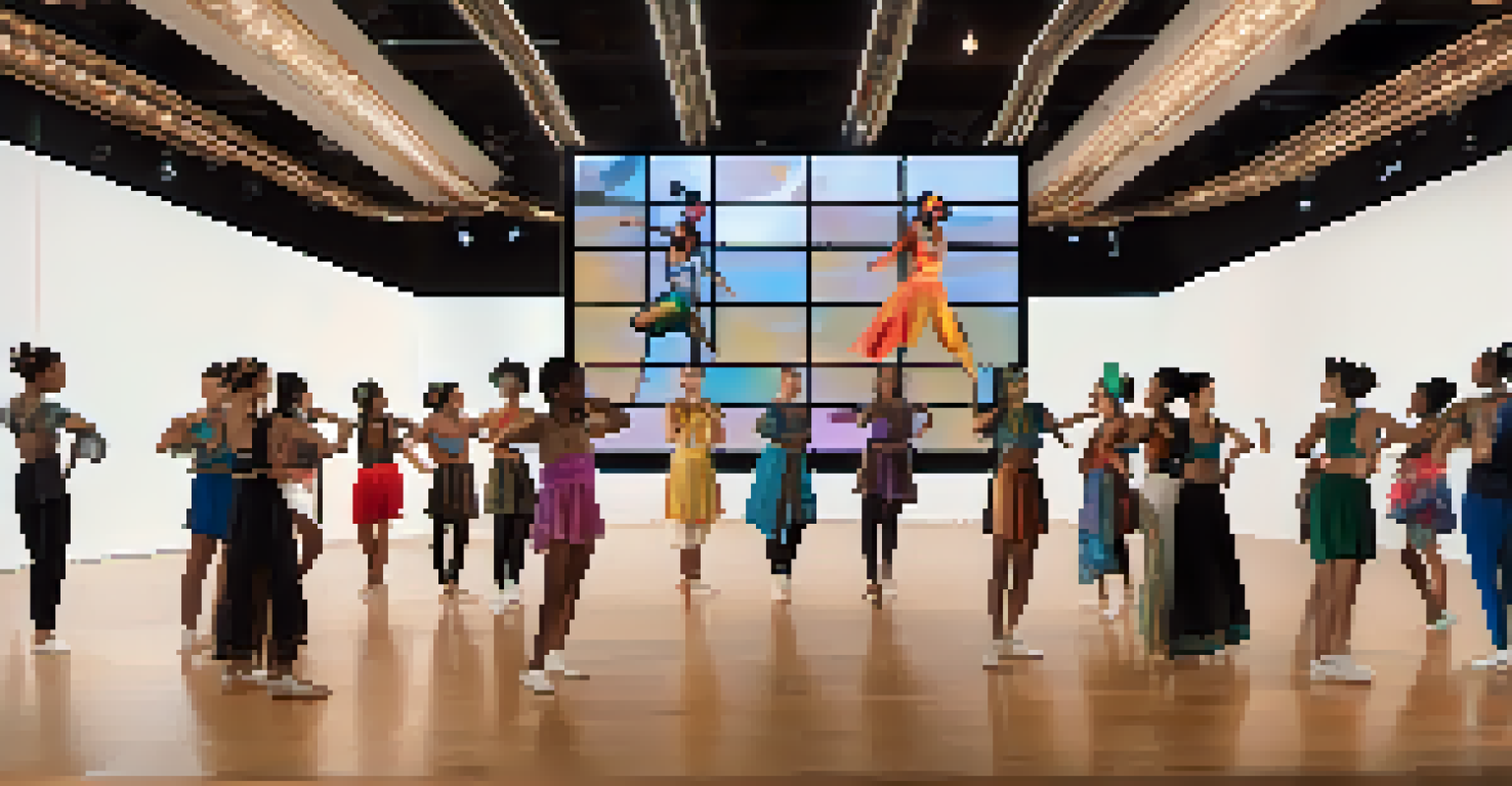Cross-Cultural Collaborations: Dance Artists Unite

The Beauty of Dance as a Universal Language
Dance is often described as a universal language that transcends borders. It allows individuals from different backgrounds to express emotions and stories without the need for words. This shared form of expression fosters connections that can be deeper than any spoken dialogue.
Dance is the hidden language of the soul.
For example, consider a group of dancers from diverse cultures coming together to create a performance. Each artist brings their unique style and narrative, weaving a beautiful tapestry of movement that resonates with audiences worldwide. This collaborative spirit not only enriches the art form but also promotes a greater understanding of each culture.
In this way, dance becomes a powerful medium for cultural exchange. It invites us to appreciate the richness of varied traditions while reminding us of our shared humanity. Through movement, we can communicate joy, sorrow, and everything in between.
Fostering Innovation Through Collaboration
Collaborative projects among dance artists often lead to innovative choreographies that push the boundaries of traditional styles. When artists blend techniques from their respective cultures, the results can be stunningly original. It’s a fusion that not only captivates audiences but also challenges dancers to expand their creative horizons.

Take, for instance, a collaboration between ballet dancers and street dancers. The combination of classical grace with urban flair creates a fresh aesthetic that can surprise and delight viewers. This kind of innovation is vital for the evolution of dance as it continually reinvents itself through new influences and ideas.
Dance: A Universal Connection
Dance transcends language barriers, allowing diverse cultures to connect and share emotional narratives through movement.
Moreover, these collaborations can spark important conversations about cultural representation. By showcasing diverse styles, artists can address stereotypes and promote inclusivity within the dance community.
Building Bridges: The Role of Cultural Exchange Programs
Cultural exchange programs play a crucial role in facilitating cross-cultural collaborations among dance artists. These initiatives allow dancers to immerse themselves in different traditions, learning from masters of various styles. This not only enhances their skills but also deepens their appreciation for other cultures.
The dance is a poem of which each movement is a word.
For example, a program that sends dancers from one country to train in another can lead to transformative experiences. Participants often return home with new techniques, perspectives, and a broader understanding of the global dance community. Such exchanges create lasting relationships and networks that benefit artists long after the program ends.
In essence, cultural exchange programs act as a catalyst for collaboration, nurturing a sense of unity among dancers worldwide. They help break down cultural barriers and inspire artists to work together in ways they might not have imagined.
The Impact of Technology on Dance Collaborations
In today's digital age, technology has revolutionized how dance artists collaborate across cultures. Video conferencing, social media, and online platforms enable dancers to connect and create without the constraints of geography. This accessibility opens up a world of possibilities for collaboration that was previously unimaginable.
For instance, a choreographer in New York can collaborate with dancers in Tokyo, sharing ideas and movements in real time. This not only enriches the creative process but also allows for a rapid exchange of cultural influences, leading to dynamic performances that reflect a global perspective.
Collaboration Sparks Innovation
Cross-cultural collaborations in dance lead to innovative choreographies that blend styles and challenge traditional norms.
Furthermore, technology allows for the documentation and dissemination of these collaborations, making them accessible to a wider audience. This visibility not only promotes the artists but also showcases the beauty of cross-cultural partnerships.
Challenges of Cross-Cultural Dance Collaborations
While cross-cultural collaborations are enriching, they can also present unique challenges. Differences in cultural backgrounds may lead to misunderstandings or conflicts in artistic vision. Navigating these differences requires open communication and mutual respect among the artists involved.
For example, a dancer accustomed to a certain style might struggle to adapt to the techniques of another culture. This can lead to frustration or feelings of inadequacy, which may affect the overall collaboration. It’s essential for artists to have patience and a willingness to learn from one another to overcome these hurdles.
Despite these challenges, the rewards of successful collaboration often outweigh the difficulties. Overcoming obstacles together can strengthen bonds and create a shared sense of accomplishment, ultimately enriching the artistic experience.
Celebrating Diversity Through Dance Festivals
Dance festivals serve as a vibrant platform to showcase the talents of cross-cultural collaborations. These events bring together artists from various backgrounds, celebrating the rich tapestry of global dance. Audiences are treated to performances that highlight the beauty of diversity, fostering appreciation and understanding.
For example, festivals like the Edinburgh Festival Fringe or the Jacob's Pillow Dance Festival feature diverse dance styles, encouraging collaborations that may not happen otherwise. Here, artists can share their work, learn from one another, and inspire creativity through their interactions.
Cultural Exchange Enriches Dance
Cultural exchange programs enhance dancers' skills and foster unity, promoting understanding across different traditions.
Additionally, these festivals often include workshops and discussions that promote cultural dialogue. By engaging with audiences and fellow artists, dancers can share their stories and experiences, further enhancing the impact of their collaborative efforts.
The Future of Cross-Cultural Dance Collaborations
The future of cross-cultural collaborations in dance looks promising as artists continue to explore new avenues for creative expression. With a growing emphasis on inclusivity and representation, these partnerships will likely become more prevalent and impactful. As dancers embrace diverse influences, the art form will continue to evolve, reflecting the complexities of our global society.
Moreover, as technology advances, the possibilities for collaboration will only expand. Virtual reality, for example, could allow audiences to experience performances from around the world, fostering a greater appreciation for different dance styles and cultures.

Ultimately, the ongoing dialogue between cultures through dance will enrich the artistic landscape. It will encourage future generations of dancers to embrace diversity, creating a dynamic and inclusive environment for all.